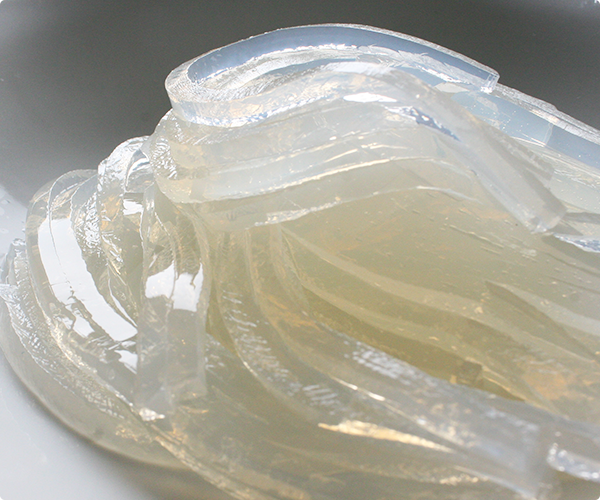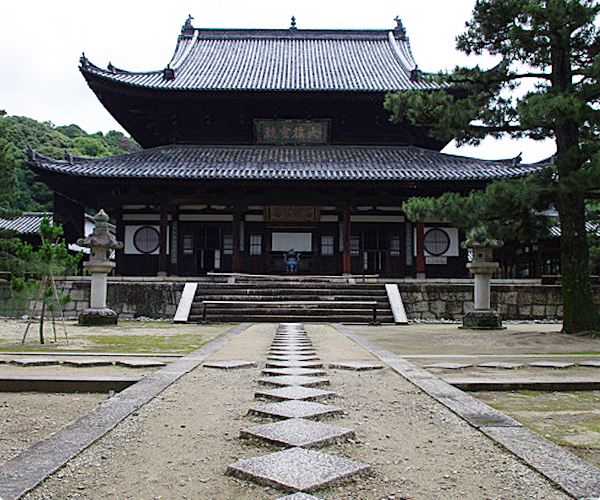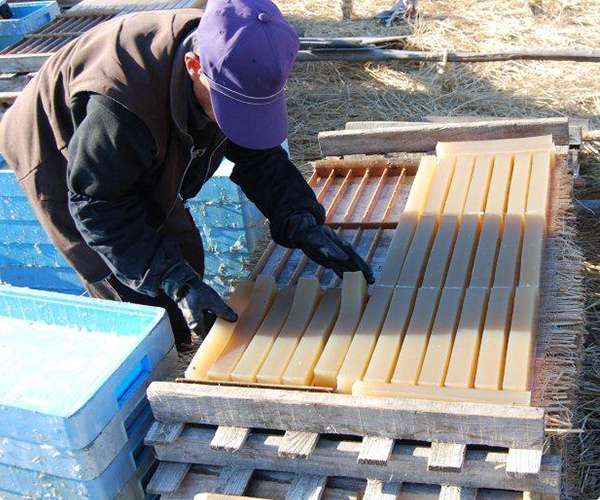

Kanten was discovered in the late 1650s or early 1660s by Tarozaemon Mino, who ran an inn called “Minoya” in Kyoto. He noticed some discarded “tokoroten” (jelly noodles made from seaweed) had frozen during the winter night. The following day it defrosted, becoming a dehydrated solid block. Curiosity peaked by this transformation, Tarozaemon boiled and cooled this substance – he ended up with a clear, solid block without the signature smell of tokoroten.
He later named this substance, “dried tokoroten” and began serving it to the customers at his inn. The rumor of this peculiar food spread quickly and many people came to know of it.

It is said a Zen Buddhist monk from Manpuku-ji Temple in Kyoto gave Kanten its name.
As the story goes…
One day, a group of Buddhist monks staying at Minoya enjoyed some “dried tokoroten” and praised Tarozaemon for his discovery and innovative culinary art. They asked him what this food was called, but he had no name for this “dried tokoroten.” One of the monks suggested he call it “Kanten” and so it was named Kanten from that point on.

Around the 1840s, a man named Kuzaemon Kobayashi from Nagano learned of Kanten manufacturing when he traveled to the western region of Japan. Because weather patterns in the Suwa Area of Nagano Prefecture are similar to Kyoto, he thought Kanten making could be a helpful secondary business to have while working on his farm. So he stayed and worked for about two years to learn the manufacturing technique of Kanten and returned to Nagano to start his own Kanten manufacturing business. This is how the Kanten industry was created in Nagano and the manufacturing technique has been passed on for nearly two centuries.
We at Megumi Kanten, based in Nagano, use this same traditional technique to manufacture our Kanten.